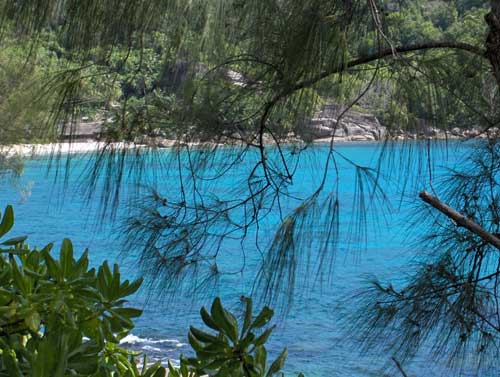 by Preston MacDougall February 10, 2008
In a way, I see everything in shades of maroon and grey. Those are the colors of my alma mater, McMaster University in Canada, where I first learned about the never-ending complexities of the behavior of everyday matter when studied at the atomic level. In other words - reality chemistry. For instance, stratospheric ozone is said to be "good" because it absorbs a lot of the sun's ultraviolet radiation that can quickly burn fair skin. I would say it is really good because I have fair skin, and UV radiation is more intense at the northern latitudes where I learned that ozone is a less stable form of the element that we'll suffocate without - apparently three's a crowd for oxygen, because ozone has one more atom than the paired atoms we breathe.  Credit: morguefile.com
I learned this bit of biochemistry taking the 210 on the outskirts of LA during a study break. A very graphic billboard wasn't just texting me about the physiological effects of extended periods of physical exertion on smog-alert days - it had photos from a young, non-smoking bicyclist's autopsy to help teach the lesson. Back in the lab at McMaster, I learned that, good or bad, ozone had practical and aesthetic qualities as well. If an oxygen-free environment was needed, we would use an electric arc to check that our glassware was airtight. The electric sparks convert oxygen in the air to ozone, just like lightning does, and there would be a beautiful pale-blue glow from the fresh ozone. If the glow was inside the apparatus, and not just outside it, then we had a leak that we had to fix if we wanted our reactions to go as planned. On yet another hand, leaks at nearby nuclear science lab at McMaster, which impressed me with the beautiful sight of a brilliant aquamarine glow, would be a much more serious matter. Since 1958, McMaster University has had an on-campus, working, "pool-type" nuclear reactor that has generated electricity, provided live-saving medical isotopes, and, most importantly, inspired and educated generations of students, including me, who learned the importance of nuclear science to disciplines ranging from archeology to zoology. Those students also experienced the beauty of Cerenkov radiation - for not too long though. The business end of McMaster's nuclear reactor is the core, with its uranium-bearing fuel rods that are submerged in water. As the uranium atoms undergo nuclear fission, many forms of ionizing radiation are emitted, including electrons ejected at nearly the speed that light travels in a vacuum. However, light travels slower in water, which is why a glass of water seems to bend light. This unusual situation of light traveling slower than the object emitting it gives rise to the unforgettable sight of the "blue lagoon". In 2007, when the reactor's license was up for renewal by the Canadian Nuclear Safety Commission, there were protests that almost succeeded in putting out this fountain of light. The main concern was not an accidental leak, but rather an intentional one where the radioactive materials were carried out. The security concerns were met by the university, hopefully still allowing controlled access by properly-screened students, and the license was renewed. Later in 2007, a more contentious license renewal transpired further north in Ontario, at the Chalk River Laboratories. Commission warnings that at one of the main reactors, a secondary water pump was not connected to an emergency power supply, went unheeded in timely manner, and the reactor was shut down by the government for a few weeks in December. Since Chalk River provides close to half of the medical world's radioactive isotopes, which because of their short half-lives cannot be stockpiled, there was an immediate negative impact on the medical treatment of over 75,000 people, across the planet, every day. Parliament acted fast, and quickly passed a law overriding the government's own regulatory body, and the cores were back in business. Almost as quickly, an appointed Minister fired the President of the Commission, a chemist named Linda Keen, apparently just because she was a political appointee, but not by his party. This political interference in science reminds me of another kind of pool that I learned about during my study break visit to LA - the La Brea Tar Pits.
On the Web:
E-mail your letters & opinions to editor@sitnews.us SitNews ©2007 Stories In The News Ketchikan, Alaska |